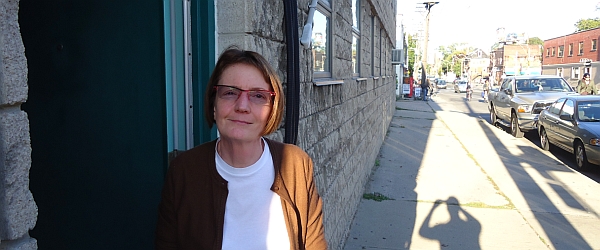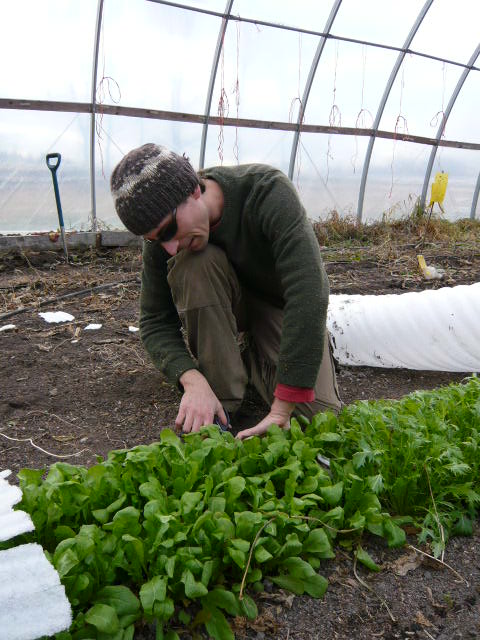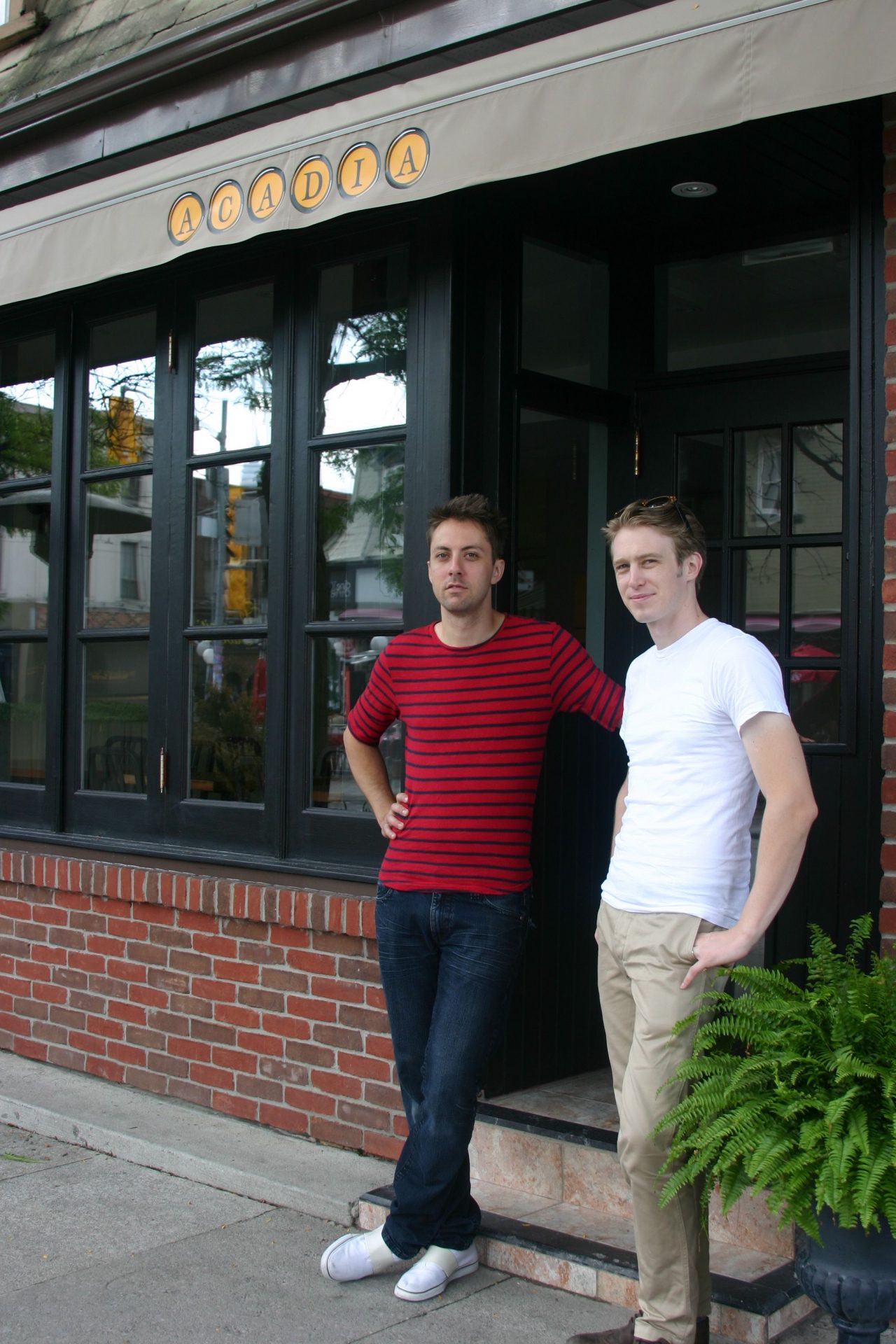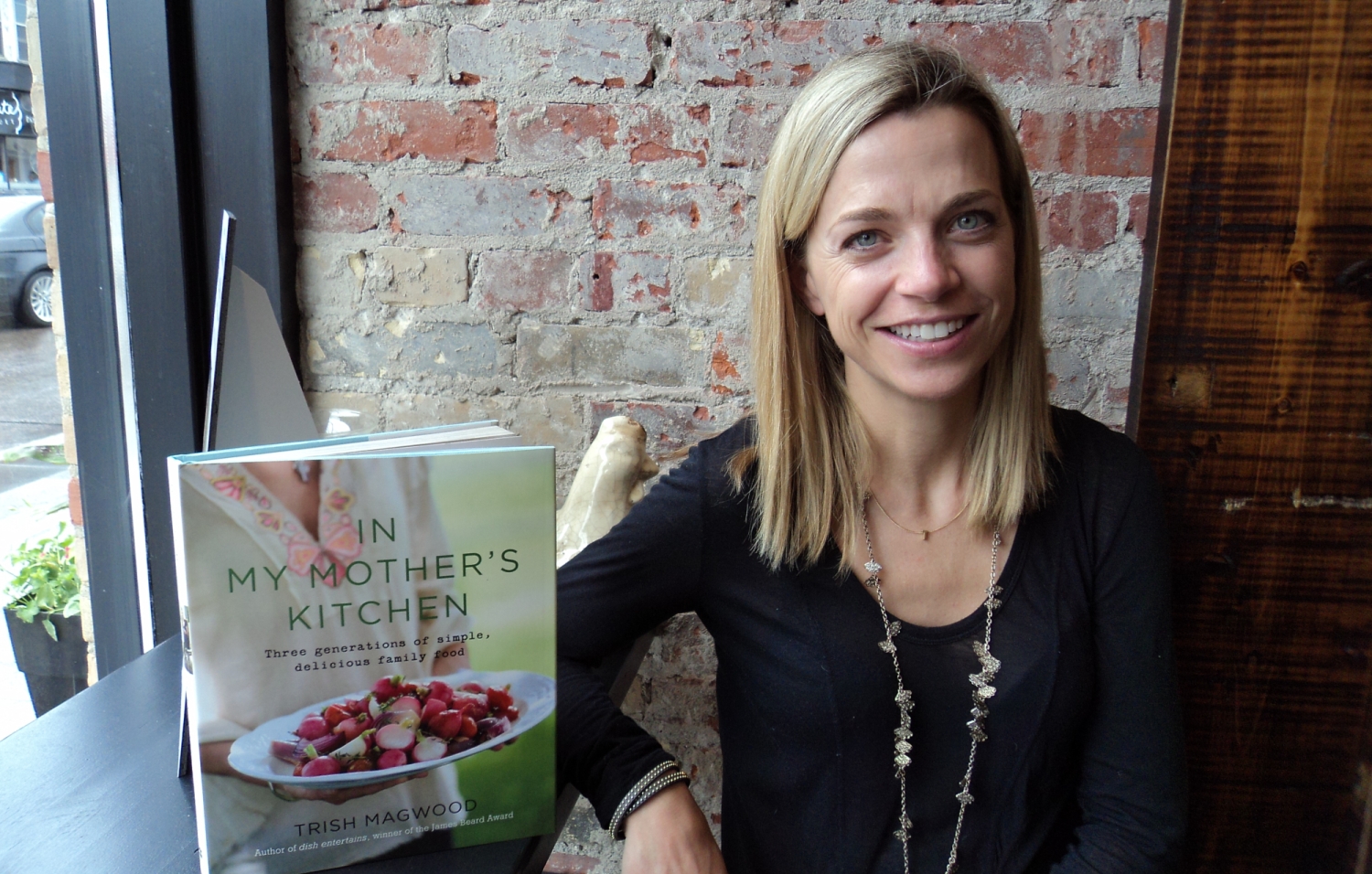by Malcolm Jolley
Odd Bits: How to Cook the Rest of the Animal is the third in Jennifer McLagan’s ‘meat trilogy’, which began with Bones and continued with Fat. Each book is both a tribute to Western culinary traditions in danger of being lost and an exhortation to home and professional cooks across the English-speaking world to smarten up and move beyond boneless, skinless chicken breasts. While Odd Bits tackles things seldom seen in supermaket meat counters like tongues, brains and lungs, McLagan insists that the ingredeints are within reach of the willing home cook as long as they can find a “real butcher” and follow her step by step instructions and the book’s stunning photography by San Francisco-based Leigh Beisch.
I caught-up with the Australian-born McLagan at her home in Toronto’s Little Italy to talk about her new book and what it was like to write it. Odd Bits, like its author, is literary and pulls from the cannon of cookery writing. The book begins with the following quote from MFK Fisher’s How to Feed a Wolf (1942), which is the basis for my first question in the interview below:
People who feel that a lamb’s cheek is gross and vulgar when a chop is not are like the medieval philosophers who argued about such hairsplitting problems as how many angels could dance on the point of a pin. If you have these prejudices, ask yourself if they are not built on what you may have been tuaght when young and unthinking, and then if you can, teach yourself to enjoy some of the parts of an animal that are not commonly prepared.
Good Food Revolution: You start Odd Bits with a quote from MFK Fisher, one of my food writing idols, and throughout this book there are quotes from similarly elevated writers…
Jennifer McLagan: Well, I wanted to say that I wasn’t the first person to think like this. But, I didn’t know who MFK Fisher was until I moved to this country. But I think it’s a great quote, because it’s true. It’s how we look at food today.
GFR: So, is it your position that we’ve learned to veer away from the odd bits?
JM: I think we’ve been seduced away. Just because, all those things we thought were special, from roast chicken which was only a Sunday dinner treat to a standing rib roast, which is still an expensive cut, are so much cheaper than they were for our grandparents. So, that’s all we’re offered. And you don’t open a food magazine and see a recipe for lamb neck. You’ll see a recipe for chicken; probably boneless and skinless. So, our world becomes reduced and small just because we decide that no one is interested [in odd bits], no one has the time to cook them and then it becomes true. I know a lady who doesn’t even want to touch meat. When she wants something exotic she buys the kabobs at whole foods that come all wrapped-up and ready to go. It’s all part of this movement from the farm to the city, from going to a butcher’s shop to a supermarket. Everybody’s just moved so far away that this has become the norm. But it’s not the norm anywhere else in the world. And it didn’t used to be the norm here either. My 1980 edition of The Joy of Cooking has recipes not just for liver, sweetbreads and kidneys but for testicles and cockscombs for God’s sake!
GFR: You live part of the time in Paris. I assume the French still eat more of these things?
JM: Yes, it’s still there. If you go to the butcher he doesn’t even blink an eye if you ask for lungs. And I’m lucky because in my local market there is a triperie – and there’s a line-up. No matter when you get there there’s a line up of 10 or 15 people.
GFR: And does he just sell tripe?
JM: He sells tripe and all the odd bits: tongue, feet, lamb sweetbreads, veal sweetbreads, lambs’ brains, calves’ brains, udder, all that stuff. And people are buying it.
GFR: You write that these were once actually highly prized pieces of meat.
JM: Yeah, because there was only one heart in the animal. And they’re highly perishable too, so once you’d killed an animal, these were the pieces you took first. I was talking to a hunter – some guy in Texas – who said they always eat the heart first when they kill a deer or an elk because it doesn’t go into rigor mortis, so you can eat it right away. And when the Plains Indians, the killed a buffalo, they would give the tongue to the medicine men – these were prized cuts.
GFR: But they’re considered to be scraps now.
JM: That’s the problem. I went to my mother’s butcher in Australia, and I saw heart in the section of the counter they called “dog food”. At least, I suppose, it’s being sold for that. The next step is that it all gets ground up and made into food for cows, and we know where that went.
GFR: Right, mad cow.
JM: Right, so we’re not familiar with [odd bits] anymore, or if we are we’ve had a bad experience with liver, where someone has cooked it for too long so it’s really tough. Or had kidneys that were really strong, so they think they don’t like them.
GFR: OK, so we know about the narrative of industrialization screwing up our food system. But you make another point, which is we’ve got all these hot shot chefs who are going in the opposite extreme with their menus.
JM: It’s shock and awe! I mean, at least they’re doing it, but I kind of object to that too because there’s this image of the young thirtysomething chef, and he’s got all these tattoos and piercings, and he’s taking on all these extreme dishes, but if it’s not very tasty, it does more damage than good… You know, Fergus [Henderson] is not like that. He’s just doing proper English cooking, he wasn’t trying to start some kind of trend.
GFR: Right, and you dedicate Odd Bits to your mother.
JM: Yeah, and my mother could open any page of one of Fergus’ cookbooks and recognize the recipes. I’m not saying she can cook like him, but she can cook her version of all the dishes. You don’t have to be thritysomething and have tats and piercings to cook this stuff. [Odd Bits has] a couple of recipes that are a little bit more complicated, but most of them are just basic, simple foods. These are peasant foods, in some respects, because people didn’t used to throw anything away. Now, we discard half the animal because it’s a foot or a cheek and therefore it’s weird.
GFR: OK, but you’re first recipe is head cheese.
JM: Well, you’ve got to start somewhere. And I want to go through the animal. So, OK, head cheese is, perhaps, a little in your face, but all you do is put a pig’s head in a pot and cook it until it falls off the bone – it’s a no brainer. You just chop it up and stick it in a bowl and it will stick to itself because there’s so much gelatine in there. And that’s a bit that usually just gets thrown away, which is pretty appalling.
GFR: And that would be pretty cool at a dinner party, to pull out a terrine that you’d made yourself.
JM: Yeah! I mean you could omit the ear, because it has a funny texture some people don’t like, but basically you’ve just made some really flavourful meat in jelly. It’s not that weird.
GFR: And what about the heart? That’s one you say is easy to try.
JM: That was one I hadn’t done before I started writing the book. I’d had it in restaurants, but I’d never actually bought a heart. So, I have the old Time-Life Foods of the World series, and there is a great photo of a little kid eating a heart kabob. So I went out and bought a beef heart, chopped it up into pieces, marinated it in a spicy marinade, and grilled them on the barbecue – four minutes in total, two minutes on each side – and it was delicious. It’s a little it denser than steak, a little more toothsome, so it doesn’t melt in you mouth. But it has great flavour and taste. Herve This says that if you chop up any meat, you begin to break down the cell structure and make it less tough, so I decided to try to make a heart Tartar, which was great. And then my husband brilliantly suggested we put some of the chopped up heart into a burger mix, which give the burger a really rich, beefy taste, and might be a good way for people to start. You get your butcher to grind it for you, and just mix it in with the regular beef. Or just throw the heart, just as it is, into any kind of braising or beef stew recipe.
GFR: You chop it up first?
JM: No, no. Cook it whole. My French friends like to see it presented whole! Then you take back to the kitchen, slice it up and pour the braising liquid as a sauce over the slices of meat. And a beef heart is about two kilos – you can feed a lot people for not much money… You know, I guess I’m crazy, I hope to change the world and get everyone eating beef hearts again.
GFR: Maybe that’s not so crazy?
JM: Well, I was just talking to someone about Fat. Every time I see something that calls itself low-fat, or an article that says animal fat is going to kill you and give you heart disease, which is so not true, I get disappointed and think I really didn’t change the world.
GFR: Well, I think it takes time.
JM: Sure: one step at a time. And with [Odd Bits] I really just wanted to reintroduce people to these foods that used to be normal. And, it’s not all bad out there. You used to think a lamb shank was strange, and know it’s on nearly every menu. It’s a regular thing. Someone told me it was a New York chef, Tom Valenti, that started cooking it 20 years ago and it caught on. Same with pork belly, which somehow got let out of the Chinese restaurants, where it had always been. So, it’s going to happen with everything else, I think. I hope.
GFR: I hope so.
JM: Yeah, so we better go buy them up now, because hearts will go from five bucks to 50 bucks soon enough! [Laughs.] You know, you can’t go and kill an animal and throw half of it out. It’s just not right.
GFR: And, I guess that if you’re a butcher, it’s more interesting to use the whole animal, anyway.
JM: Sure, I was talking-to Pete Sanagan who says he’s starting to get beef hearts and making kabobs out of them. And if you’re a real butcher and getting quarters or halves of animals coming in, you want to be able to sell all of that animal. And I see now that there are a lot of places where you can by rendered fat, or lard, so…
GFR: OK, so let’s get back to the book. How many of the recipes were things you were doing anyway, and how much was new for you?
JM: Mostly new. I’ve been cooking neck for awhile – I had neck in Bones. And it’s such a fabulous cut of meat. Something like venison neck is so much cheaper than any other part of the animal. Whole lamb neck is an awkward cut of meat, but once you cookout, the met just falls right off the bone. Tails are the same thing. But I had never had lungs, for instance. I had no idea what they would be like – I thought they would be like balloons. But they’re these two giant sponges! So, I made this soup from a recipe that I found on the Internet from this guy in Germany who is trying to keep this tradition alive. And he was so sweet, sending me step by step pictures by email. I found a lot of this total generosity between complete strangers in writing this book. He just really loved this way of cooking. Brains – I had to overcome my prejudice against barns, which came from how my mother cooked them. Luckily, Chris McDonald had fixed that, because I had one the brain fritters [that are in the book] off of one of his tasting menus at Avalon and thought, wow, this is good.
GFR: Isn’t that cheating?
JM: No. You put the brains into a fritter, you put some cheese in there. You can slide it past people and they say, “Ah, this is not so bad”. My husband never liked brains, but now all he does is ask me to make the brain ravioli. It’s a version of the brain ravioli they had at The Black Hoof. They had a brain ravioli with artichokes.
GFR: What else was new for you?
JM: Testicles. I’d never handled them at all. [Laughs.] But I’d had them in Paris and they’re like eating a quenelle; the same moussy kind of texture. Of course, guys always get a little funny about eating them…
GFR: Err, yeah.
JM: Yeah, but I had some friends over, who will eat anything, and served them testicles and they all said they were really good. So, it’s really between the ears a lot of the time, just because we’re unfamiliar. But it’s just food, just another part of the animal. Whether it’s the cheek or the back, it’s really just another piece of meat. You just have to get used to it. Who knows? Maybe Chatelaine will do a spread on testicles one day! They could at least do lamb’s neck, or something like that. Then, it makes it more legit, if it gets into the mainstream.
GFR: OK, but I’ve talked to national magazine editors, and they say they have to be really careful about ingredients that are available to their readers in places like Thunder Bay and Moose Jaw.
JM: I bet the readers in Thunder Bay or Moose Jaw would be more accepting than those in Toronto or Vancouver. Especially if they’re hunters. And I think sometimes we underestimate people. And if you put it out there, maybe they’ll be shocked the first time. But after the second or third time – or if things show up in a few different magazines – then, maybe people will want to try it. But it’s hard to get people to be daring these days, isn’t it? Because of the state of the economy… but still, think of tongue. Here’s a huge piece of meat for only a few dollars. Why aren’t more people eating it?
GFR: Also, since I am usually on protein duty at home, I find it boring to cook the same three or four cuts of meat over and over again. If it’s Tuesday, it must be pork chops.
JM: That’s why you see those thousands of recipes for chicken breasts. They are variations on the same thing to try and make it more interesting. So, it’s kind of nice to change it up a bit. And something like tongue is fabulous because it’s great cold in a sandwich. Or, one thing I didn’t know is that at the back of the tongue it’s quite thick and full of fat – it’s marbled. So you cut it into thick slices, give it a glaze and barbecue it. One of the guys from Black Hoof told me he thought it was kind of like Wagyu beef. When it’s warm, it’s really soft an creamy.
GFR: Hard to get or not?
JM: Tongue? Really easy. Ask your butcher.
Click here to follow Jennifer McLagan’s blog. And look for Odd Bits in Good Food Fighter stores like The Cookbook Store and Good Egg, and just about evrywhere else they sell books.
 Malcolm Jolley is the executive director of Good Food Media, a not-for-profit organisation dedicated to educating the public about artisanal food and the publisher of Good Food Revolution. Follow him at twitter.com/malcolmjolley.
Malcolm Jolley is the executive director of Good Food Media, a not-for-profit organisation dedicated to educating the public about artisanal food and the publisher of Good Food Revolution. Follow him at twitter.com/malcolmjolley.









Trackbacks/Pingbacks